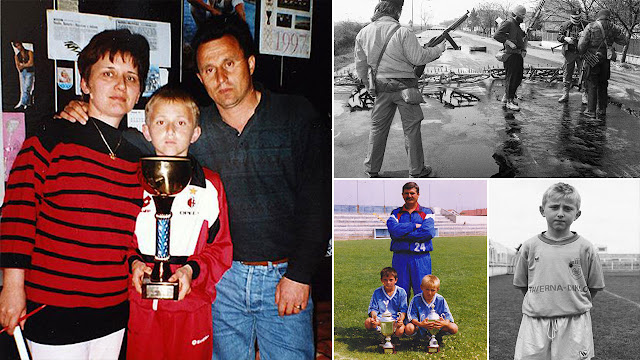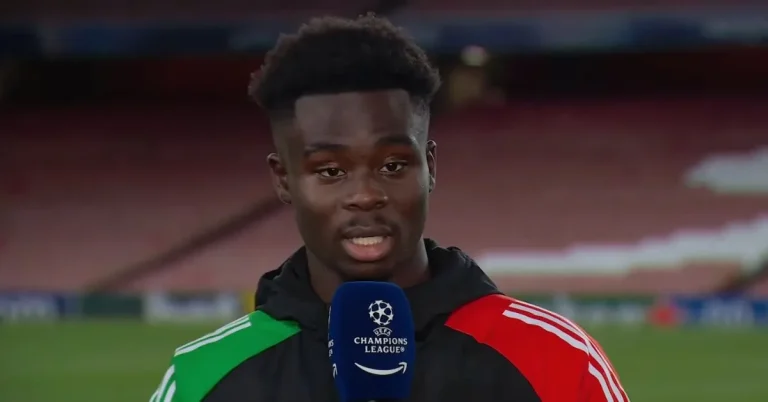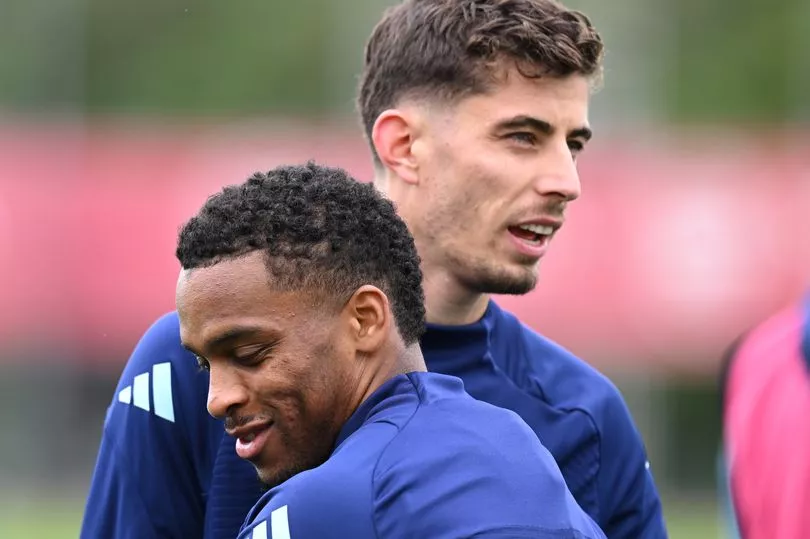To begin the biography, Luka Modrić was born on September 9, 1985 in Zadar, Croatia. He was born into a family of refugees who fled Serb aggressors during the Bosnian War.
Luka Modric’s mother, Radojka Modrić, was once a textile worker and his father, Stipe Modrić, was once a military mechanic who repaired cars for Croatian soldiers in the war.
Luka, during his childhood, experienced the horrible events in Zadar during the Croatian War.
Luka Modric’s first steps in football

Modric had a youth trial for the first time at Hajduk Split. Unfortunately, as they said, he was rejected by Hajduk Split for not having the required physical attributes.
It is still unclear what God did for this gene of his that changed his story. It was still a revelation that Luka was destined to become a top player.
Young Luka focused all his strength on hard work. He later corrected people’s mistaken impression that he was physically weak and small.
This came at a time when he achieved what people would call “a narrow success” at Dinamo Zagreb. It was a happy start to his career.
As soon as he joined the club, Modric ended up showing a lot of faith and quality. Dinamo Zagreb quickly extended his contract to ten years.
He had slow and steady growth in height after being fed many growth supplements by club officials.
In an attempt to gain more experience, Luka was loaned to Zrinjski Mostar after playing for Dinamo Zagreb. This was a point where his career really took off. He was also loaned to Bosnian side Inter Zaprešić.
Return to Dinamo Zagreb
He was recalled to Dinamo Zagreb in 2005 and received a 10-year contract, but only played for them for 4 seasons.
He finished his time at Dinamo with 21 goals and 21 assists. Luka also helped the Croatian team become league champions in the 2007–2008 season, with a margin of 28 points ahead of second place, and the Croatian Cup of the same year.
Tottenham
Modrić accepted terms with Tottenham on 26 April 2008, hoping to receive a work permit. He was Spurs ‘ first signing of the summer window that season. The player’s contract ran for six years, starting in mid-2008. Tottenham confirmed that the total value of the transfer was £16.5 million, equaling the club’s record spending on a single transfer, which is held by the signing of Darren Bent , in 2007. It is also the most expensive transfer in Prva HNL
Real Madrid
On August 27, 2012, after months of negotiations, Real Madrid agreed to sign Modrić for five seasons for 35 million euros. He made his debut in a Real shirt in a match against Barcelona in the second leg of the 2012 Spanish Super Cup final at the Santiago Bernabéu stadium , replacing Mesut Özil in the 83rd minute. The Merengues won and the Croatian achieved his first title with the team less than two days after signing with the club. Despite his great debut, the midfielder had difficulty adapting to the team led by José Mourinho due to the lack of training in pre-season, after all, negotiations with Real lasted much of the transfer window. Therefore, Modrić played out of his position or was on the bench for much of the season due to the presence of other midfielders, these were Xabi Alonso , Sami Khedira and Özil. He scored his first club goal in a 4–0 rout of Real Zaragoza in the Spanish Championship . However, he was chosen as the club’s worst signing at the end of the year by Spanish newspaper Marca .
2013–14
With the arrival of Italian coach, Carlo Ancelotti , Modrić established himself as a starter in the team, playing alongside Xabi Alonso to balance the defense and attack of the Madrid midfield. The Croatian quickly became the Spanish club’s most efficient passing player, with over 90% accuracy in the Spanish League, and also had the highest number of ball recoveries on the team.
He scored for the first time in the Spanish Championship in the Whites’ 3-0 away win against Getafe , his sixth goal outside the box. Modrić also participated in Real Madrid’s victory over rivals Barcelona in the Copa del Rey final and won his second title with the club.
Modrić took the corner and defender Sergio Ramos scored with a header, so the club managed to equalize in second-half stoppage time, after goals from Bale , Marcelo and Cristiano in extra time, Real beat Atlético de Madrid in a 4-1 victory. 1 and won “la tenth” , so called because it was the tenth time that the club won the UEFA Champions League. The Croatian reinforced his importance to Real by being included in the UEFA Team of the Season and winning the La Liga award for “best midfielder” of the season.
2014–15
At the end of November, Modrić suffered a thigh injury in a match against Italy , the injury took him off the field for three months, leaving him out of the Club World Cup in which Real Madrid would become champions. He returned in March 2015, playing in seven matches and thus proving that he was recovered. He tore the ligaments in his right knee in the Merengues’ 3-1 victory over Málaga , which took him off the field until May. With his injury, the club’s run of 22 wins for the season came to an end. The player’s constant injuries and the lack of an appropriate replacement were considered the main causes of the Merengue’s failure this season. Real saw rivals Barcelona win the Champions League , La Liga and the Copa del Rey that season.
2015–18
Coach Carlo Ancelloti was fired and was replaced by Rafa Benítez at the beginning of the season, under his command, Modrić remained a starter and a vital part of the midfield.

With the dismissal of Rafa Benítez and the arrival of Zinédine Zidane , the midfielder continued as a starter and the relationship between him and the coach was noticed by the media. When speaking of Zidane, Modrić stated in interviews that he was “convinced that he will have a very prosperous career as a coach” and that he would be the “right man for the job”
Luka Modric parents

Luka Modric’s parents ( Stipe Modric and Radojka Modric) were suddenly thrown into the middle of a war in 1991, with the outbreak of the Croatian War of Independence, and had to spend almost five years as refugees with their families.
At six years old, Luka, the eldest of Modric’s children, was forced to live in hotels for seven years after the family home burned to the ground.
After losing everything, Modric’s parents suddenly found themselves in financial difficulties. Their son was forced to play football in the parking lot of the hotel where the family was forced to stay.
Both parents worked in the same textile factory before the war in Croatia, but Modric’s father, Stipe, became a mechanic after joining the Croatian army.
Modric cites those years as a refugee with his parents as the most difficult of his life, but also one that shaped his outlook on life.
His determination to succeed and his closeness to his family resulted from shared experiences during a truly difficult part of Croatian history. Despite the dangers and upheavals, Stipe and Radojka Modric tried to give their son as normal a life as possible.
Despite the war affecting the Modric family’s finances, young Luka was enrolled in a sports academy to improve his football skills, showing that his supportive parents already had an inkling that their son could become a professional football player.
Modric would end up playing for Zadar and Dinamo Zagreb as a youngster, before breaking into Zagreb’s first team in 2003.

It is a testament to Luka that upon signing his first lucrative contract in 2005, when he signed a ten-year contract with Dinamo Zagreb, the first thing he bought was an apartment for his family in his hometown of Zadar.
At 20 years old, the future Croatian star was finally able to give back to his family and help them integrate into everyday life.
Luka Modric’s brothers

Luka Modric has two sisters, Jasmina and Diora, who grew up with Luka in Zadar, Croatia. The two Modric sisters are younger than their midfielder brother and grew up watching their older brother conquer the world of football.
Although both sisters generally stay out of the spotlight, they have both become huge Real Madrid fans and have often been seen supporting their brother from behind the scenes.
Diora and Jasmina have followed Luka’s career since he first appeared at Dinamo Zagreb, with a photo of Modric on the pitch after Dinamo won the championship in 2008.
At the time, both sisters were still very young and were kept away from the media frenzy that would often surround their famous older brother in the years to come.
Fast forward to 2019, and Luka Modric’s sisters have grown up, with sister DIora even accompanying Modric to an awards ceremony.
Wife of Luka Modric

The Real Madrid legend’s love life revolves around a woman. Her name is Vanja Bosnic.
They started dating in 2006, during his loan return to Dinamo Zagreb. Luka made her his agent once he developed complete trust in her as the woman of her dreams.
Children of Luka Modric

Their marriage was quickly blessed with the fruit of the womb. Vanja Bosnić and Luka’s first child, Ivano, was born on June 6, 2010.Their daughter, Ema, was born on April 25, 2013.
Vanja Bosnić and Luka’s second daughter, Sofia, was born on October 2, 2017.
Modrić generally lives a quiet family life, all thanks to his humble beginnings. He believes he should be seen as a football player and not as a celebrity or model.



